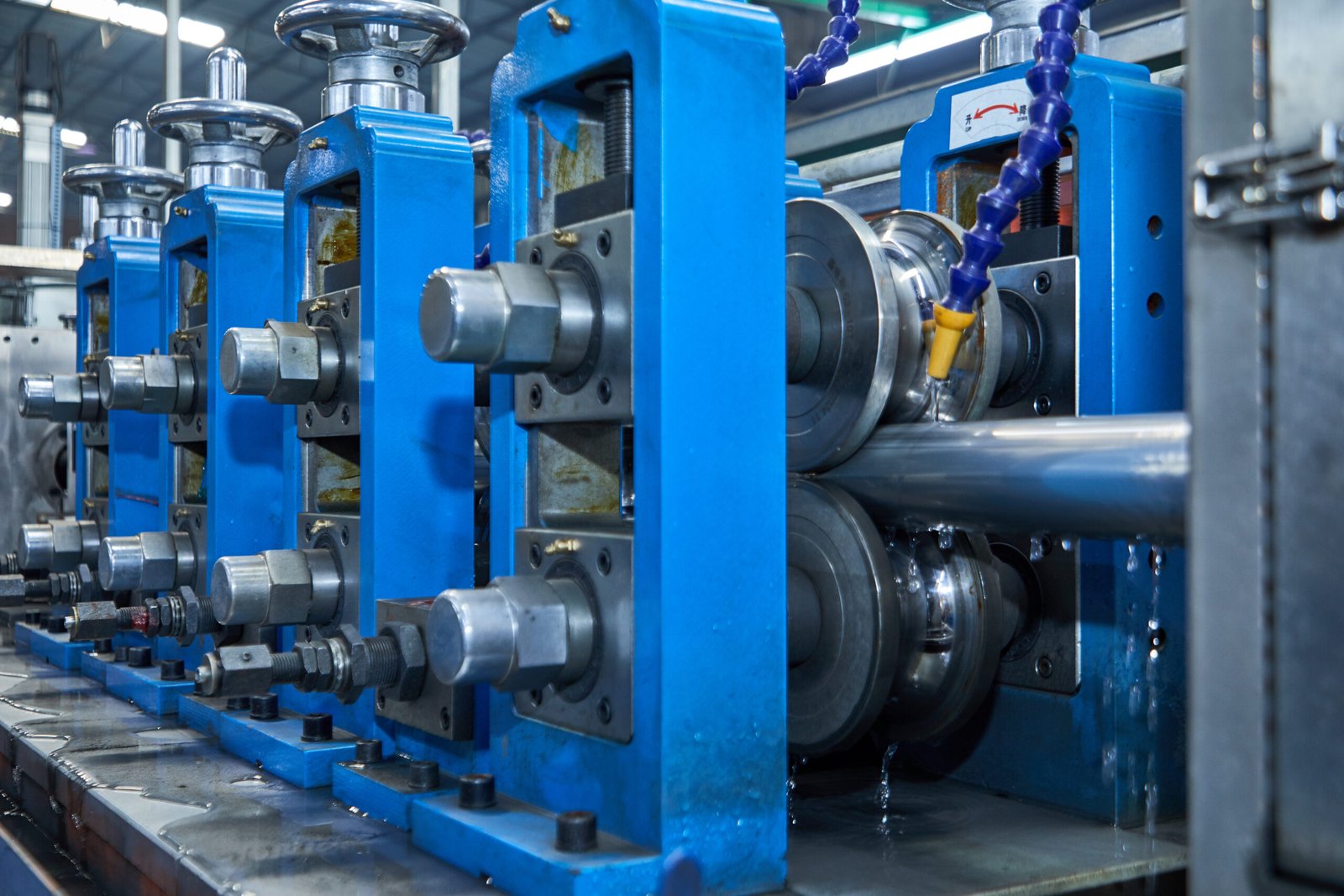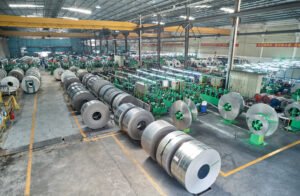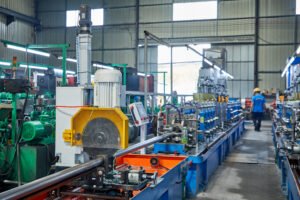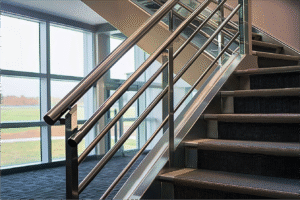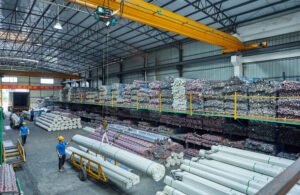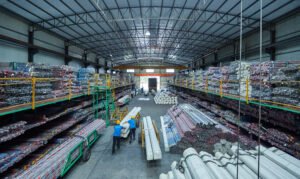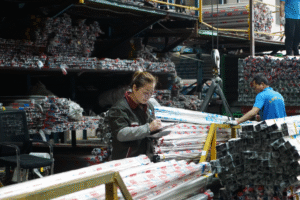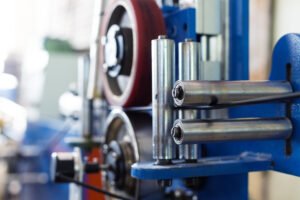Противопожарные спринклерные системы: Почему нержавеющие трубы Schedule 40 выигрывают у оцинкованных
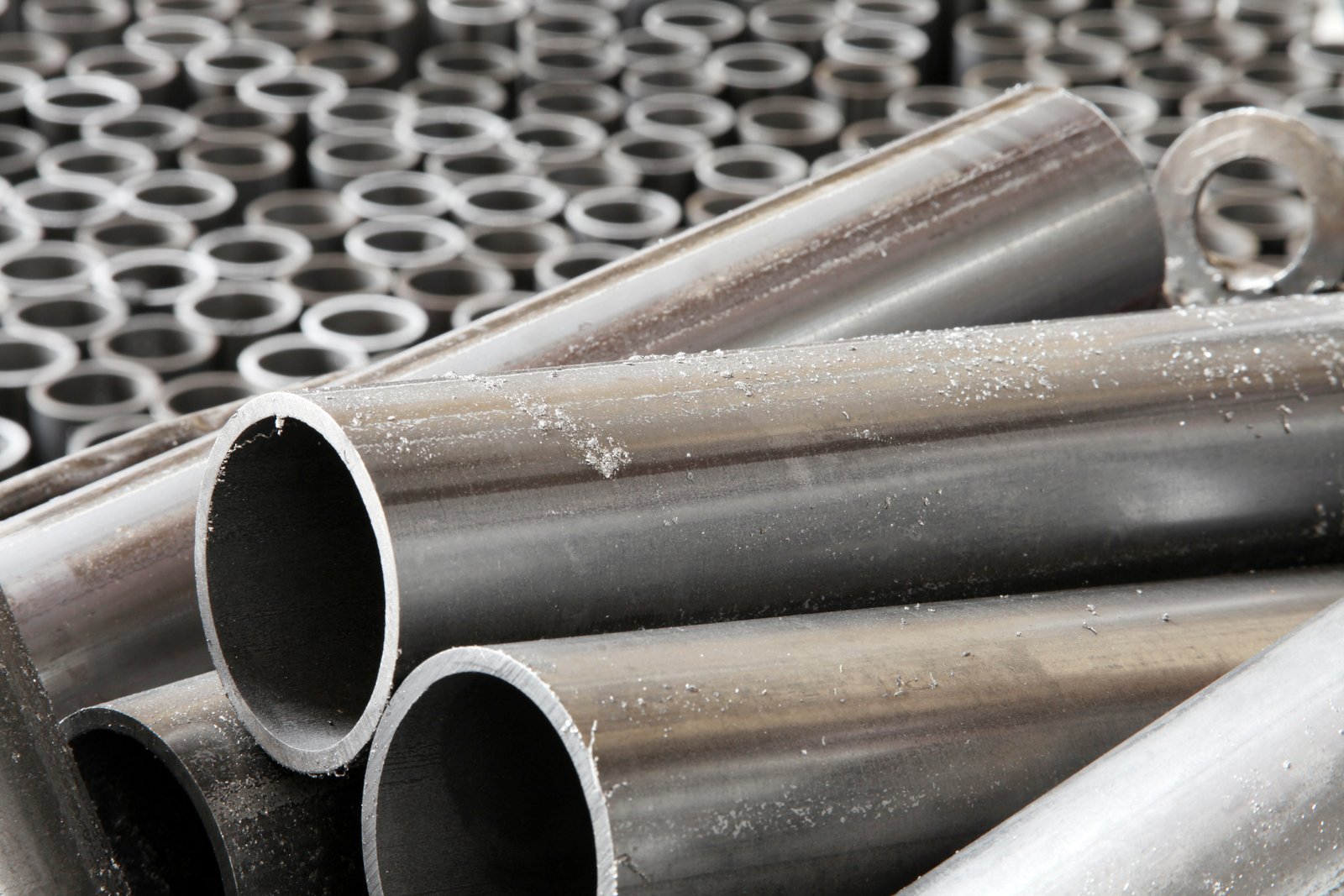
Are you concerned about the long-term reliability and hidden costs of your fire sprinkler systems? Galvanized pipes, a traditional choice, often degrade from the inside out, leading to premature failures and costly repairs, putting safety at risk. This silent threat can compromise your entire fire protection strategy.
Schedule 40 stainless steel pipe offers a superior alternative for fire sprinkler systems due to its exceptional corrosion resistance, longevity, and lower lifecycle costs. Unlike galvanized pipe, it is not susceptible to the delamination or flaking of a protective layer, ensuring system integrity and reliability.
In my years as Global Business Director at MFY, I've seen countless clients grapple with the consequences of choosing the wrong materials. The decision between galvanized and stainless steel isn't just a technical detail; it's a fundamental choice that impacts a building's safety, maintenance budget, and long-term value. We'll explore why a shift in perspective is not just beneficial, but essential.
Making the right material choice from the outset is a critical strategic decision. This isn't merely about comparing two types of metal; it's about evaluating the total cost of ownership1, risk mitigation, and long-term performance. While galvanized steel has been a common choice due to its lower initial cost, a deeper analysis reveals its vulnerabilities, particularly to internal corrosion, which can go undetected until a catastrophic failure. Stainless steel, on the other hand, represents an investment in resilience. As we’ll see through industry data and real-world applications, its inherent properties provide a robust defense against the very factors that degrade lesser materials, ensuring your fire protection system is ready when you need it most.
What are the key characteristics of Schedule 40 stainless steel and galvanized pipes?
Struggling to differentiate between pipe materials for your fire protection system? The choice seems complex, with both Schedule 40 stainless steel and galvanized pipes presented as viable options. However, their fundamental material differences dictate their performance, longevity, and suitability for this critical safety application.
Schedule 40 designates the wall thickness of a pipe. For stainless steel, this means a robust, inherently corrosion-resistant alloy. Galvanized pipe is carbon steel coated with zinc, a protective layer that can degrade over time, especially from internal corrosion, compromising the pipe's structural integrity.
The distinction between these two materials goes far beyond a simple checklist of properties. It represents a fundamental difference in approach to long-term safety and asset management. As someone who has guided numerous engineering contractors and facility managers through this decision-making process, I’ve seen firsthand how an initial focus on upfront costs can lead to significant downstream expenses and risks. A client of ours, a large-scale distributor in Southeast Asia, used to primarily stock galvanized pipes for fire sprinkler projects. They faced increasing complaints about premature system failures and leaks within 5-7 years, far short of the expected lifespan. The issue was almost always traced back to microbiologically influenced corrosion (MIC), which aggressively attacks the zinc coating and then the steel itself. This experience highlights that the "protective" layer on galvanized pipe is, in reality, a finite resource that depletes over time. In contrast, stainless steel's resistance is integral to its entire structure. This inherent, non-sacrificial protection is the core reason why organizations are increasingly viewing it as the superior standard for systems where failure is not an option. This shift in understanding the material science is crucial for making an informed choice that prioritizes reliability.
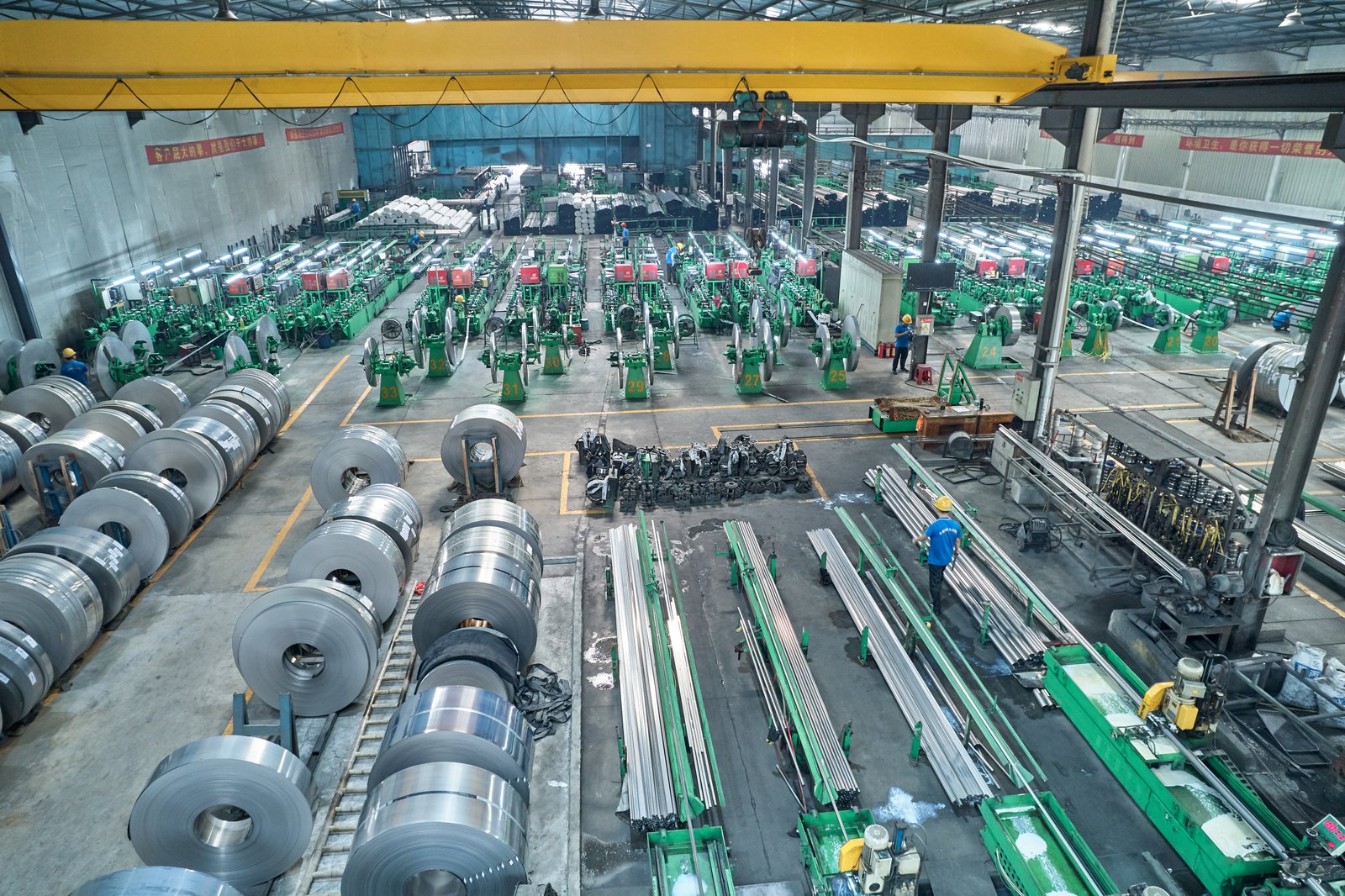
The selection of piping material for a fire sprinkler system is a foundational decision that influences every subsequent aspect of the system’s life, from installation to decades of maintenance-free operation or costly, recurring repairs. Understanding the core differences between Schedule 40 (Sch 40) stainless steel and galvanized steel requires looking beyond the surface and into the material science that defines their behavior in the specific environment of a wet-pipe sprinkler system. While both are designated "Schedule 40," indicating a standard wall thickness capable of handling the required pressures, their composition and method of corrosion protection are worlds apart. Galvanized pipe is essentially a carbon steel pipe that has been dipped in a molten zinc bath to create a protective outer coating. This process, hot-dip galvanizing, is designed to prevent the underlying steel from rusting. Stainless steel, typically Type 304 or 316 for these applications, is an alloy of steel, chromium, and often nickel. The chromium creates a passive, invisible layer of chromium oxide on the surface that is self-healing and provides corrosion resistance throughout the entire thickness of the material. This distinction is not academic; it is the central factor that determines the system's long-term viability. The zinc on a galvanized pipe is a "sacrificial" coating, meaning it is designed to corrode away to protect the steel. In the stagnant, low-oxygen water environment of a sprinkler system, this process can be accelerated by factors like MIC, leading to pinhole leaks and tuberculation that clogs pipes and sprinkler heads. This is a failure mode that stainless steel, with its passive and regenerative protective layer, is inherently designed to resist.
The Fundamental Composition: Alloy vs. Coating
The most critical distinction lies in how each pipe achieves its corrosion resistance. For galvanized pipe, it's a surface-level defense. The zinc coating acts as a barrier, but it's a finite one. In the water-filled environment of a fire sprinkler system, this zinc layer slowly erodes. One of our partners, an engineering and construction contractor in India, shared a compelling case from a project at a large manufacturing facility. They had to replace a 10-year-old galvanized sprinkler system after discovering severe internal tuberculation during a routine inspection. The blockage was so significant that it would have rendered the system ineffective in a fire. The water analysis revealed conditions ripe for MIC, which had consumed the zinc coating and aggressively attacked the steel beneath.
In sharp contrast, Schedule 40 stainless steel's corrosion resistance is not a coating but an intrinsic property of the metal itself. At MFY, we primarily produce pipes from 304 and 316 grade stainless steel. The chromium content (a minimum of 10.5% by mass) reacts with oxygen to form a passive, tenacious, and self-repairing layer of chromium oxide. If this layer is scratched or damaged, it instantly reforms, providing continuous protection. This "built-in" defense mechanism means that the pipe's integrity is maintained throughout its entire wall thickness, offering a level of reliability that a coated product simply cannot match over the long term, especially in the demanding, stagnant water conditions typical of sprinkler systems.
The practical implication of this difference is profound. With galvanized pipe, you are essentially starting a countdown timer on its protective layer from the day of installation. For stainless steel, you are installing a material that is in a stable, passive state with its environment. This eliminates the guesswork and risk associated with the depletion of a sacrificial coating. For our clients, from equipment integrators to facility managers, this translates into peace of mind and a predictable, lower total cost of ownership, which we will explore later in this article.
Mechanical Properties and Durability
While both pipes share the "Schedule 40" designation, their mechanical behavior and durability under stress differ significantly, impacting installation and long-term performance. Galvanized pipe, being coated carbon steel, is strong but relatively rigid. The process of threading or grooving the pipe for connections can damage the zinc coating at the most critical points—the joints. These damaged areas become immediate hotspots for corrosion to begin, creating a weak link in the system from day one. This is a common point of failure we've discussed with many installation contractors who have had to perform early-life repairs on galvanized systems precisely at these connection points.
Stainless steel, on the other hand, possesses excellent ductility and strength. Grades like 304 offer a good balance of formability and weldability, making the installation process smoother and more reliable. For instance, the use of press-fit or grooved systems with stainless steel pipes is increasingly common. These methods are not only faster than traditional welding or threading but also preserve the integrity of the pipe's passive layer, ensuring consistent corrosion resistance across the entire system. During a consultation for a high-tech manufacturing client in the Middle East, where system purity and uptime were critical, the decision to use MFY's Sch 40 316L stainless pipe was driven by its superior mechanical properties. The ability to use clean, reliable joining methods without compromising the material was a key factor in mitigating risk for their sensitive operations.
Furthermore, the lifecycle durability of stainless steel is demonstrably superior. It is far more resistant to the physical damage that can occur during construction or throughout the building's life. Its resilience against both internal (corrosion) and external (impact) factors ensures the system remains operational and compliant with safety standards like NFPA 13, which fully approves the use of stainless steel in fire sprinkler systems. This robust nature is a testament to its value as a long-term asset, not just a component.
Comparing Industry Standards and Applications
The standards and typical applications for these materials tell a story of evolving best practices. Historically, galvanized steel was the go-to upgrade from black steel for wet pipe systems, offering what was considered improved corrosion resistance. It became common in commercial and industrial buildings. However, decades of field experience have revealed its limitations, particularly the issue of MIC and the finite life of its zinc coating. As a result, industry standards and engineering specifications have increasingly shifted to recognize and recommend more resilient materials.
Сайт National Fire Protection Association (NFPA) 132, the benchmark standard for the installation of sprinkler systems, explicitly lists stainless steel as an approved material. This endorsement is based on extensive testing and proven performance. In my experience, this official recognition is a powerful driver for adoption. We work with many distributors whose clients, the end-users, are now specifically demanding NFPA-compliant stainless steel solutions to avoid the problems they've experienced with galvanized systems in the past. They are moving away from a reactive, repair-based maintenance model to a proactive, reliability-focused one.
Below is a comparative table summarizing the key characteristics we've discussed, which we often share with clients to clarify the choice:
| Characteristic | Schedule 40 Galvanized Pipe | Schedule 40 Stainless Steel Pipe |
|---|---|---|
| Material Composition | Carbon steel with a bonded zinc coating | Steel alloy with chromium (>10.5%) |
| Устойчивость к коррозии | Sacrificial coating (finite life) | Intrinsic, passive, self-healing layer |
| Primary Failure Mode | MIC, delamination, pitting, tuberculation | Highly resistant to common corrosion |
| Joining Methods | Threading, grooving (can damage coating) | Welding, grooving, press-fit (maintains integrity) |
| NFPA 13 Approval | Approved | Approved and increasingly preferred |
| Typical Lifespan | 10-25 years, variable | 50+ years |
This shift is most pronounced in critical facilities like hospitals, data centers, and high-value manufacturing plants, where system failure can have catastrophic consequences beyond fire damage. For these applications, Schedule 40 stainless steel is no longer seen as an alternative but as the baseline for ensuring safety and operational continuity.
Stainless steel resists MICПравда
Stainless steel's chromium oxide layer provides inherent protection against microbiologically influenced corrosion (MIC), unlike galvanized pipes.
Galvanized coating is permanentЛожь
The zinc coating on galvanized pipes is sacrificial and degrades over time, especially in wet sprinkler system environments.
How do Schedule 40 stainless steel pipes compare to galvanized pipes in terms of corrosion resistance?
Are you worried that the fire sprinkler pipes you install today will become a liability tomorrow? The threat of hidden corrosion in galvanized pipes can lead to clogged systems and catastrophic failures, undermining the very safety they are meant to ensure. This is a major concern.
Schedule 40 stainless steel pipe offers intrinsically superior corrosion resistance compared to galvanized pipe. Its chromium-based passive layer self-heals and withstands microbiologically influenced corrosion (MIC), unlike the finite, sacrificial zinc coating on galvanized pipe, which degrades and exposes the underlying steel to attack.
This is not just a theoretical advantage; it's a practical reality I've seen play out across numerous projects. In the humid climates of Southeast Asia and the industrial environments of the Middle East, we've worked with contractors who have had to undertake massive, costly retrofitting projects to replace galvanized systems that failed in as little as five years. The culprit is almost always internal corrosion, a silent destroyer that clogs pipes and sprinkler heads with tuberculation. One client, an engineering firm responsible for a chain of hotels, made the switch to MFY's stainless steel pipes after a galvanized system failed a routine flow test, jeopardizing their insurance and occupancy permits. The subsequent inspection revealed pipes choked with rust and zinc deposits. This experience taught them a valuable lesson: the corrosion resistance you can't see is the one that matters most in a fire sprinkler system. Choosing stainless steel is an investment in permanent, reliable protection, not a temporary, depleting defense mechanism. It ensures water flows when it's needed most.
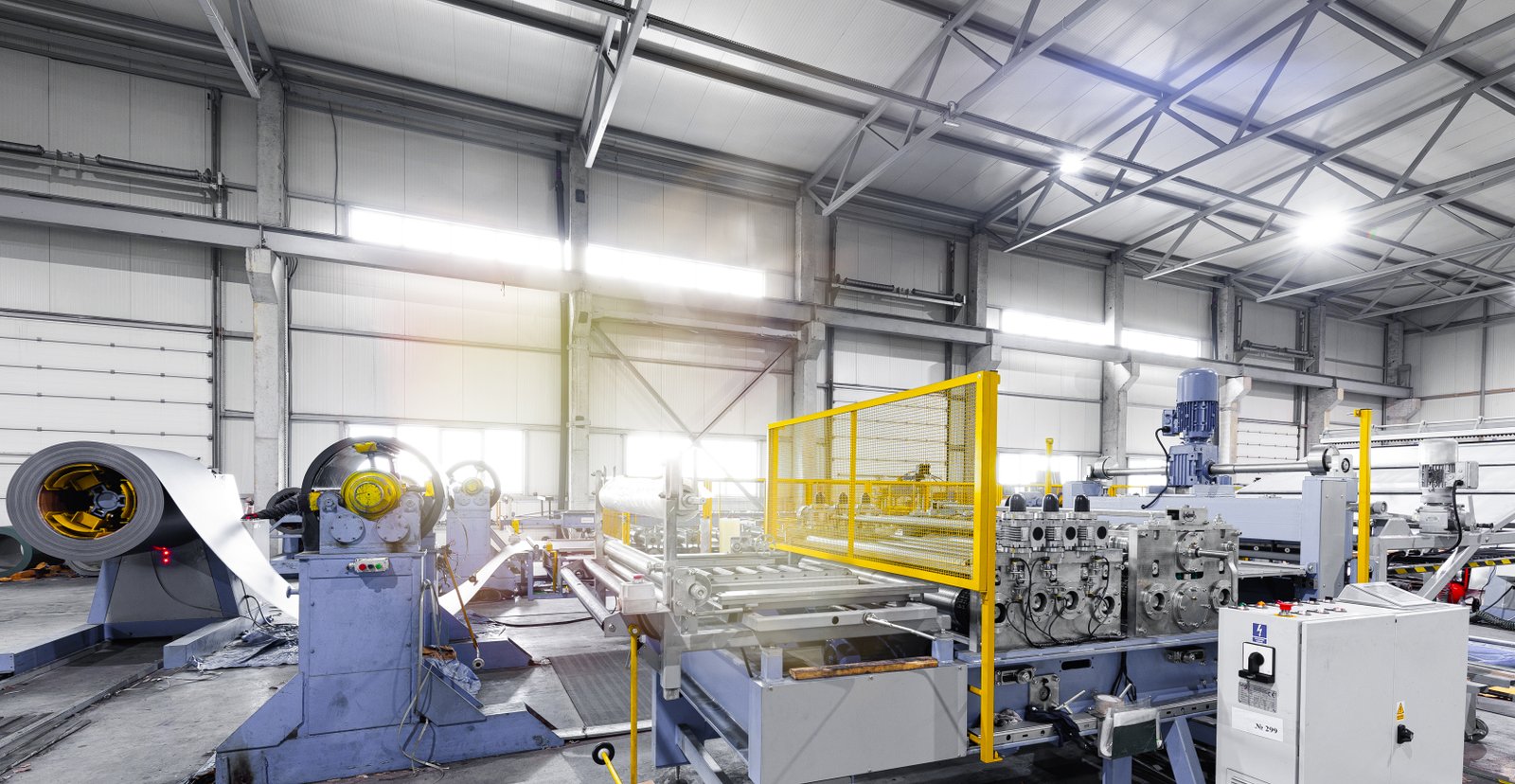
The central argument for preferring Schedule 40 stainless steel over galvanized pipe in fire sprinkler systems hinges on the nature and longevity of their respective corrosion resistance mechanisms. This is the single most important factor determining the system's long-term reliability, safety, and total cost of ownership. Galvanized pipe relies on a fundamentally flawed principle for the specific application of a wet-pipe sprinkler system: a sacrificial coating. While hot-dip galvanizing provides robust protection in atmospheric conditions, the stagnant, low-oxygen water environment inside a sprinkler pipe creates a perfect storm for its demise. The zinc coating is designed to corrode preferentially to protect the steel, but this process is finite. More alarmingly, it can be dramatically accelerated by microbiologically influenced corrosion (MIC), where bacteria colonize the pipe interior, metabolize elements, and create corrosive byproducts that can perforate the pipe wall in a fraction of its expected service life. This leads not only to leaks but also to the formation of voluminous rust deposits (tubercles) that can obstruct water flow and clog sprinkler heads, rendering the system useless. In my role at MFY, I’ve reviewed countless failure analysis reports from clients, and the pattern is consistent: galvanized pipes that look pristine on the outside are often rotting from the inside. Stainless steel, by its very design, circumvents this entire failure mode. Its corrosion resistance is not a layer; it is an inherent property of the alloy itself. The chromium within the steel forms a passive, non-reactive, and self-repairing film of chromium oxide. This film provides a stable barrier between the metal and the water, effectively preventing the electrochemical reactions that constitute corrosion. It is not consumed or depleted, and it provides robust protection against general corrosion, pitting, and, most importantly, MIC.
The Inevitable Failure of Sacrificial Coatings: The Case of MIC
Microbiologically Influenced Corrosion (MIC) is the leading cause of premature failure in galvanized steel fire sprinkler systems. It is an insidious process that is poorly understood by many who specify and install these systems. Certain types of bacteria thrive in the anaerobic (low-oxygen) conditions found in stagnant sprinkler water. They attach to the pipe wall and, through their metabolic processes, create localized chemical environments that are extremely aggressive to both the zinc coating and the carbon steel beneath. This results in deep, localized pitting that can quickly lead to pinhole leaks. We worked with a major distributor in Russia who supplied materials for a large commercial complex. Within eight years, the galvanized sprinkler system began experiencing widespread leaks. The investigation, which MFY supported, confirmed rampant MIC. The cost of replacing the system was more than three times the initial installation cost due to business disruption and demolition requirements.
The byproducts of this corrosion process, a mixture of rust, zinc compounds, and bacterial colonies, form hard buildups called tubercles. These growths can severely restrict the internal diameter of the pipe, reducing water flow and pressure far below the levels required for effective fire suppression. A system clogged by tuberculation is a system that will fail. This is not a risk; it is an eventuality for many galvanized systems. According to research from the National Fire Sprinkler Association (NFSA), MIC can lead to failures in galvanized pipes in as little as two to three years in aggressive environments.
Stainless steel, particularly grades like 304L and 316L, is highly resistant to MIC. The passive chromium oxide layer is non-porous and does not provide a nutrient source for the bacteria, preventing them from colonizing the surface and initiating the corrosive process. This inherent resistance is why critical industries, from pharmaceuticals to food processing, have relied on stainless steel for decades to maintain sterile and stable fluid transport. The fire protection industry is now leveraging this same proven technology to ensure ultimate reliability.
The Self-Healing Power of Passive Film in Stainless Steel
The "magic" of stainless steel lies in its passive film. Unlike a layer of paint or zinc, which, once breached, exposes the base metal to attack, the chromium oxide layer on stainless steel is dynamic and self-repairing. If the surface is scratched, abraded, or otherwise damaged, the exposed chromium in the metal immediately reacts with oxygen in the environment (even the small amount dissolved in water) to instantly reform the protective passive film. This ability to self-heal ensures that the corrosion protection remains intact throughout the life of the pipe, even at points of mechanical damage or fabrication, such as at grooves or welds. This is a profound advantage over galvanized pipe. When a galvanized pipe is threaded or grooved for installation, the zinc coating is invariably removed, leaving the raw steel exposed at the most critical connection points. These areas become anodic sites, initiating an aggressive and localized corrosion process from the moment the system is filled with water.
I recall a personal experience visiting a construction site for a new data center in India. The chief engineer was adamant about using MFY's Schedule 40 stainless steel pipes. He showed me a section of galvanized pipe from another one of his projects that had been in service for only five years. At a threaded joint, the corrosion had eaten away nearly half of the pipe wall's thickness. He contrasted this with a stainless steel system, explaining, "With stainless, I have one less point of failure to worry about. The material protects itself. I am not installing a problem for my successor to solve in a few years."
This self-healing property ensures a consistent and predictable level of performance over decades. It eliminates the primary mechanism of failure seen in galvanized systems and provides a level of assurance that is simply unattainable with a coated product. It is the reason why the lifecycle of a stainless steel sprinkler system is projected to be 50 years or more, often matching the lifespan of the building itself.
Long-Term Performance Data and Lifecycle Analysis
When we look at the long-term performance data, the superiority of stainless steel becomes undeniable. Life Cycle Cost (LCC) analysis, which considers not just the initial material and installation costs but also maintenance, repairs, inspection, and replacement costs over the life of the system, consistently favors stainless steel. A study published by the Fire Protection Research Foundation (FPRF) highlighted that while the upfront material cost of stainless steel can be higher than galvanized, the total cost of ownership is significantly lower due to the elimination of costs associated with corrosion-related failures.
Let's consider a hypothetical but realistic 30-year lifecycle cost comparison for a medium-sized commercial building:
| Cost Factor | Galvanized Steel System | Stainless Steel System |
|---|---|---|
| Initial Material Cost | $100,000 | $180,000 |
| Installation Cost | $150,000 | $140,000 (Faster w/ press-fit) |
| Annual Inspection | $5,000 | $5,000 |
| Corrosion-related Repairs (Yrs 10-15) | $40,000 | $0 |
| Major System Retrofit (Yr 20) | $350,000 | $0 |
| Total 30-Year Cost | $790,000 | $470,000 |
This analysis demonstrates how the initial savings on galvanized pipe are quickly eroded and ultimately dwarfed by future expenses. The risk of leaks, property damage, business interruption, and the eventual need for a full system replacement make galvanized steel a financially risky proposition. A key client of ours, an equipment integrator for industrial facilities, now uses this type of LCC analysis to convince their customers. They found that presenting the long-term financial case was far more effective than just discussing technical material properties. It shifts the conversation from "How much does it cost today?" to "What is the best long-term investment for my facility?" This data-driven approach proves that Schedule 40 stainless steel is not just the safer choice, but also the more economical one.
Stainless steel resists MIC better than galvanized pipesПравда
Stainless steel's chromium oxide layer prevents bacterial colonization that causes MIC, while galvanized pipes' zinc coating is vulnerable to microbial attack.
Galvanized pipes have lower total cost than stainless steelЛожь
While galvanized pipes have lower initial costs, their corrosion-related repairs and replacements make them more expensive over a 30-year period.
What is the impact of material longevity on maintenance and costs in fire-sprinkler systems?
Choosing cheaper materials like galvanized pipe3 might seem like a smart way to manage initial project budgets. But what happens when those "savings" lead to exorbitant maintenance bills, unexpected system failures, and the astronomical cost of a full replacement within a decade?
Material longevity directly dictates the total cost of ownership. Schedule 40 stainless steel's 50+ year lifespan eliminates the frequent corrosion-related repairs, leak damages, and premature system replacement costs inherent to galvanized pipes, which often fail in 10-25 years, resulting in significantly lower lifecycle costs.
At MFY, we often consult with facility owners who are "pipe-rich but performance-poor." They have extensive sprinkler systems that have become a financial drain and a constant source of worry. I remember a conversation with the operations manager of a large distribution center. He calculated that his team spent over 300 man-hours a year chasing and repairing pinhole leaks in their 12-year-old galvanized sprinkler system. That doesn't even include the cost of damaged inventory or the ever-present risk of a system-wide failure. The decision to progressively replace sections with our stainless steel pipe was not driven by a preference for a premium material, but by the hard financial reality that the "cheaper" option was costing them a fortune. This scenario is incredibly common. The longevity of stainless steel transforms a fire sprinkler system from a recurring liability into a one-time, reliable asset. It fundamentally changes the maintenance paradigm from reactive and costly to proactive and predictable, securing both the facility and its budget.
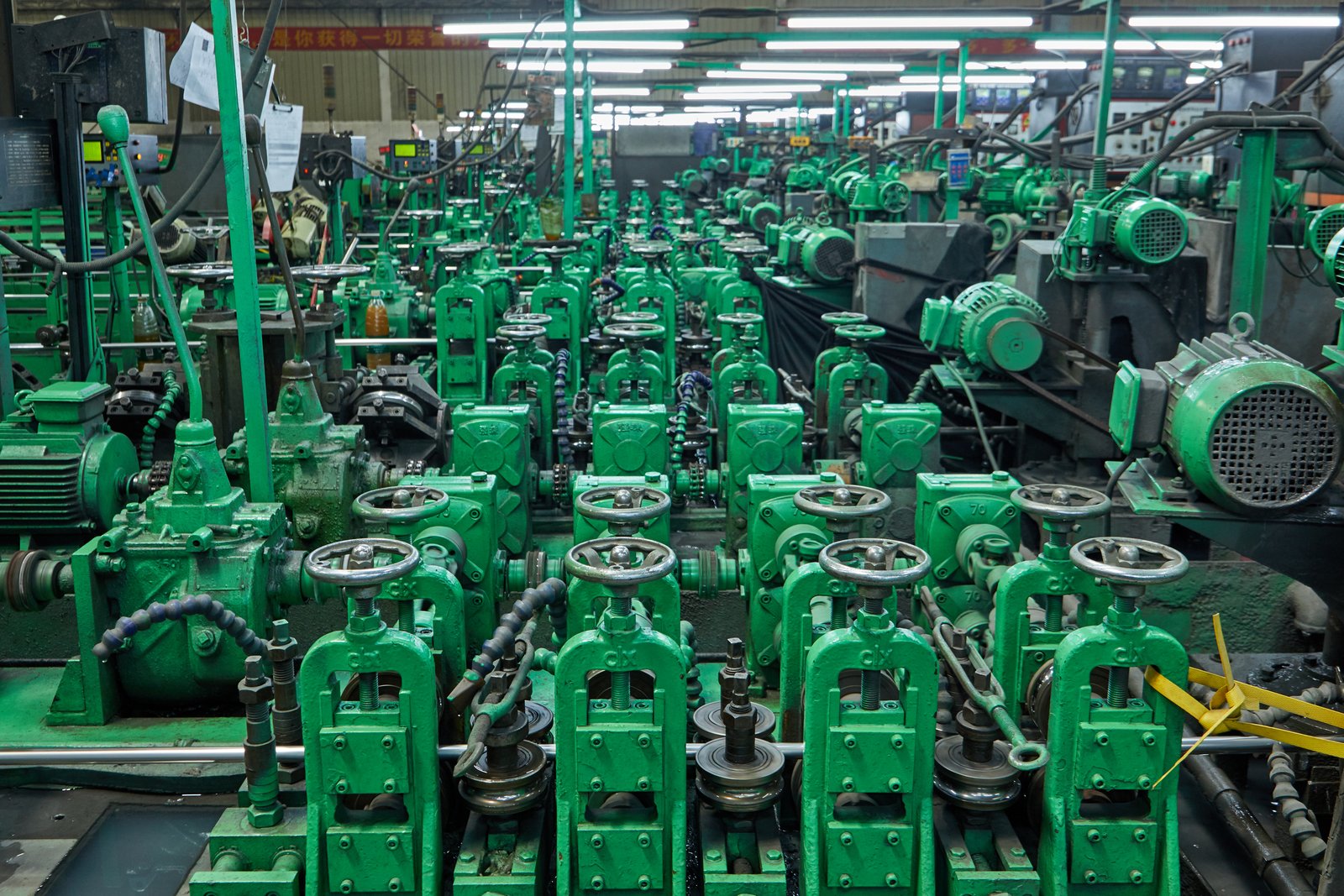
The impact of material longevity on the overall lifecycle of a fire sprinkler system is the cornerstone of a sound financial and safety strategy. The choice between a material with a variable and often short lifespan, like galvanized steel, and one with a predictable and long lifespan, like stainless steel, has cascading effects on every aspect of building management. A fire sprinkler system is not a disposable component; it is a critical piece of life-safety infrastructure that is expected to function flawlessly for decades. When the chosen material is unable to meet this expectation, the consequences are severe, encompassing not just direct repair costs but also a host of indirect expenses, operational disruptions, and increased risks. The initial cost of piping material typically represents only a small fraction of a building's total construction cost, yet the failure of that piping can lead to damages and replacement expenses that are orders of magnitude higher. The core issue with galvanized pipe is the uncertainty of its longevity. While it may last 20-25 years under ideal conditions, the widespread presence of MIC in water supplies globally means it can—and often does—fail in as little as 5-10 years. This unpredictability turns what should be a passive safety system into an active maintenance problem. Contrast this with stainless steel, which boasts a proven service life of over 50 years in this application. This longevity provides a stable, predictable foundation for a building's safety plan, effectively removing the variable of premature, corrosion-induced failure from the equation.
The Direct Costs of Premature Failure: Repair and Replacement
The most obvious impact of poor material longevity is the direct cost associated with fixing and replacing the system. When a galvanized pipe system begins to fail, the costs are not linear. It starts with chasing pinhole leaks—a frustrating and labor-intensive process. Each leak requires shutting down a section of the system, draining it, cutting out the failed piece of pipe, replacing it, and then refilling and testing the system. Each incident involves labor costs, material costs, and often the cost of repairing water damage to ceilings, walls, and equipment. As the system ages, the frequency of these leaks increases exponentially. A client of ours, a property management firm overseeing a portfolio of commercial office buildings in the Middle East, conducted an audit and found that their maintenance budget for galvanized sprinkler systems was 300% higher than for their newer buildings equipped with stainless steel.
Eventually, the system becomes so compromised that spot repairs are no longer feasible, and a full or partial replacement is necessary. This is a capital-intensive undertaking. The cost of the new piping is often dwarfed by the cost of demolition (removing old pipes from walls and ceilings), labor, and business interruption. For a hospital, hotel, or manufacturing plant, shutting down operations for a major retrofit can cost millions. I have personally seen quotes where the cost to replace a failed galvanized system in a 15-year-old building was five times the original installation cost.
With Schedule 40 stainless steel, these costs are virtually eliminated. Its resistance to the internal corrosion that plagues galvanized pipe means leaks are exceedingly rare. The system does not degrade over time, so the specter of a premature, multi-million-dollar replacement project never materializes. The investment in stainless steel is, therefore, an investment in cost avoidance.
Indirect and Hidden Costs: Insurance, Compliance, and Business Interruption
Beyond the direct costs of repair, the poor longevity of galvanized pipe creates a cascade of hidden expenses4 and risks. Insurance providers are increasingly aware of the liabilities associated with aging galvanized sprinkler systems. A history of leaks or a failed system inspection can lead to increased insurance premiums or, in severe cases, difficulty in obtaining coverage. Compliance with fire codes and standards like NFPA 25 (Standard for the Inspection, Testing, and Maintenance of Water-Based Fire Protection Systems) also becomes a major issue. A key requirement of NFPA 25 is the internal inspection of piping every five years to check for obstruction. If significant tuberculation is found in a galvanized system, it can trigger a costly mandate to flush the entire system or replace large portions of it to ensure it can perform in a fire.
Business interruption is perhaps the most significant indirect cost. A leak in a data center, a clean room, or above high-value manufacturing equipment can cause catastrophic damage and halt operations for days or weeks. One of our clients, an equipment integrator for the semiconductor industry, exclusively uses MFY's 316L stainless steel pipes for their projects. The reason is simple: their end-clients cannot tolerate even the slightest risk of a system leak. The cost of a single day of downtime for one of their fabrication plants is greater than the entire installed cost of the sprinkler system.
The reliability and longevity of stainless steel mitigate these risks entirely. It provides the assurance that the system will remain compliant, insurable, and will not be a source of unexpected and costly business disruptions. This transforms the system from a potential liability into a truly passive and reliable safety asset.
Total Cost of Ownership (TCO): A Paradigm Shift
The concept of Total Cost of Ownership (TCO) is essential for understanding the true value of material longevity. TCO forces a shift away from short-term, upfront cost thinking to a long-term, strategic asset management perspective. As we've established, the initial purchase price of galvanized pipe may be lower, but its TCO is invariably higher than stainless steel when all factors are considered. A comprehensive TCO model includes: initial acquisition cost, installation cost, energy costs (clogged pipes require more pressure), maintenance and repair costs, downtime costs, and eventual disposal or replacement costs.
Let's revisit the financial impact with a more detailed breakdown. For a typical galvanized system, the TCO curve starts low but rises sharply after the first decade as maintenance costs begin to accrue, spiking dramatically when replacement becomes necessary. For a stainless steel system, the TCO curve starts higher but remains almost flat for its entire service life. We encourage our partners—from distributors to contractors—to adopt this TCO-based sales approach. It reframes the conversation with the end-user. Instead of selling a product (pipe), they are selling a solution: 50+ years of worry-free, reliable fire protection.
This was pivotal for a construction contractor in Southeast Asia bidding on a series of public-private partnership (PPP) projects for schools and hospitals. By presenting a detailed TCO analysis that clearly demonstrated the long-term savings and reliability of stainless steel, they were able to justify the higher initial material cost. The government client, responsible for the long-term maintenance of these buildings, recognized the superior value and awarded the contract. This is the power of focusing on longevity: it aligns the interests of all stakeholders towards the most reliable, safe, and financially sound solution.
Stainless steel lasts 50+ yearsПравда
Schedule 40 stainless steel has a proven service life exceeding 50 years in fire sprinkler applications, eliminating premature replacement costs.
Galvanized pipes never need replacingЛожь
Galvanized pipes typically require full replacement within 10-25 years due to corrosion, often costing 5x the original installation.
How does the installation process differ between Schedule 40 stainless steel and galvanized pipes?
Considering a new fire sprinkler installation5? You might assume that traditional galvanized pipe is the easier, faster choice. However, the cumbersome, dirty, and error-prone nature of threading and joining galvanized pipes can lead to longer project timelines and built-in points of failure from day one.
The installation of Schedule 40 stainless steel is often faster, cleaner, and more reliable than galvanized pipe. Modern joining methods like grooving and press-fitting for stainless steel are quicker than threading galvanized pipe, reduce labor costs, and eliminate the risk of damaging a protective coating.
From my vantage point at MFY, I get direct feedback from installation teams on the ground. A consistent theme is the dramatic improvement in project efficiency when they switch to stainless steel. One of our distributor partners in India recently supplied a project for a large hotel. The contractor decided to use stainless steel with a grooved system for the first time. They reported a 30% reduction in installation time compared to a similar-sized project using threaded galvanized pipe. There were no heavy threading machines to move around, no cutting oils to clean up, and the connections were consistently perfect. This not only accelerated their project schedule but also resulted in a higher quality, leak-free system from the start, passing the initial pressure test without a single issue. This is the modern reality of pipe installation.
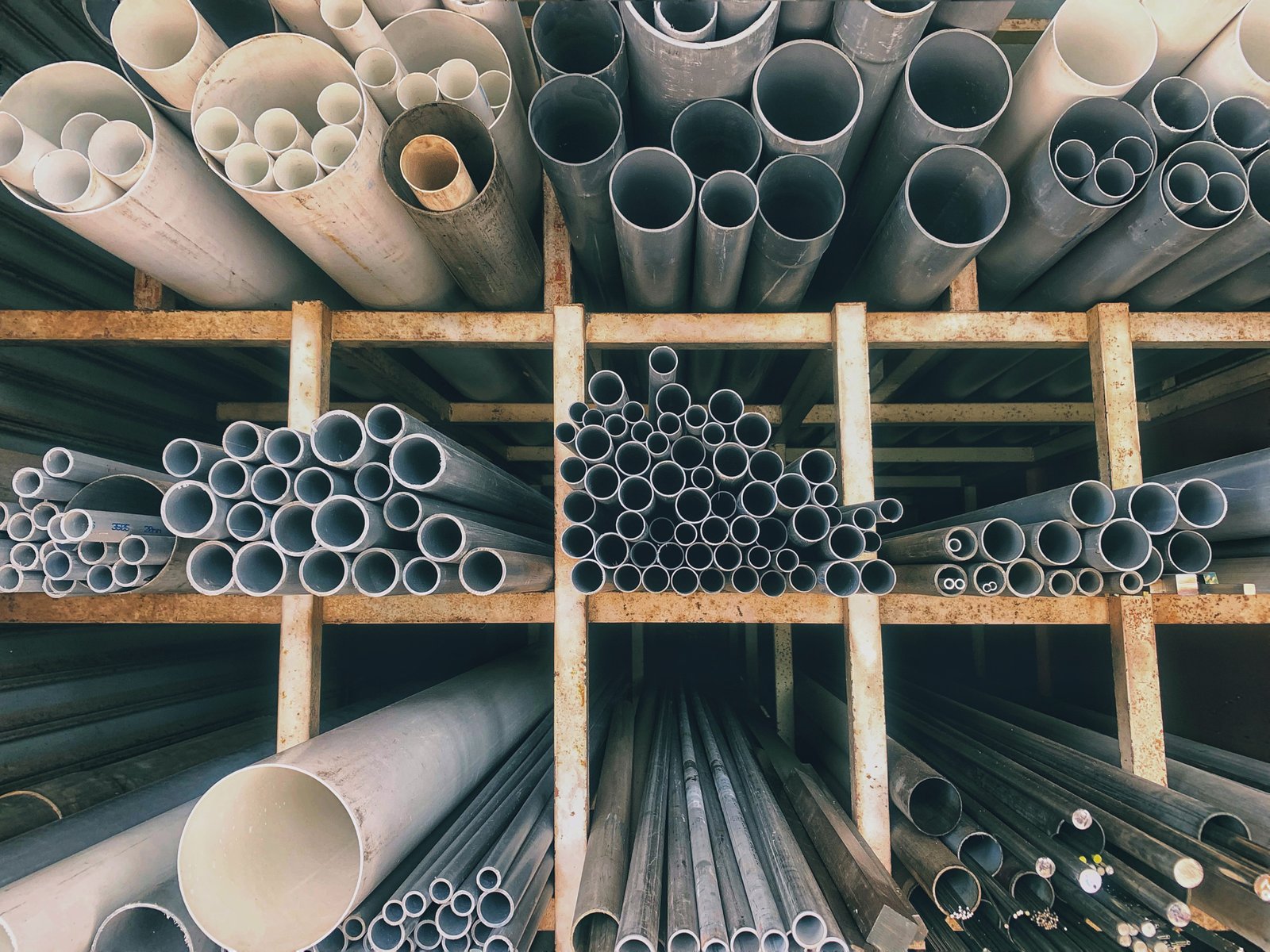
The differences in the installation process for Schedule 40 stainless steel and galvanized pipes have a significant impact on project timelines, labor costs, on-site safety, and the ultimate integrity of the finished system. While traditionalists may be more familiar with the methods used for galvanized steel, modern techniques available for stainless steel offer clear advantages in efficiency and reliability. The choice of installation method is intrinsically linked to the properties of the material itself. Galvanized pipe6, being rigid and reliant on a surface coating, is most commonly joined by threading. This is a multi-step, labor-intensive process that involves cutting the pipe to length, running it through a heavy threading machine that uses cutting oils, and then wrench-tightening the fittings. Each step introduces potential problems, from inconsistencies in the threads to damage to the galvanized coating. Stainless steel, due to its superior ductility and inherent corrosion resistance, is compatible with a wider range of advanced joining technologies, most notably grooved mechanical couplings and press-fit systems. These methods are designed for speed, simplicity, and repeatability, transforming the installation process from a craft into a streamlined assembly operation. As a supplier of high-quality stainless steel pipes to global markets, we at MFY have seen a rapid acceleration in the adoption of these modern techniques, as contractors and engineers recognize their profound benefits.
Speed and Efficiency: Grooving and Press-Fit vs. Threading
The most significant differentiator in installation is speed. Threading galvanized pipe is a slow, sequential process. Each joint requires precise measurement, cutting, oiling, threading, and tightening. It’s a physically demanding task that requires specialized, heavy equipment that must be moved around the job site. This process can become a major bottleneck in a construction schedule. In contrast, joining stainless steel pipes using a grooved system is remarkably fast. A groove is cold-rolled into the end of the pipe, a gasket is placed over the pipe ends, and a two-piece coupling is bolted into place. This can be accomplished in a matter of minutes with simple hand tools, compared to the much longer process for creating a single threaded joint.
Press-fit systems are even faster. The installer simply inserts the pipe into a fitting containing a pre-installed O-ring and then uses a lightweight, handheld tool to crimp the fitting, creating a permanent, watertight seal in seconds. I recently reviewed a case study from a client, an engineering contractor in Russia, who was building a large data center under a tight deadline. They switched from their planned galvanized system to an MFY stainless steel pipe system with press-fittings mid-project. They calculated that the installation speed for the piping was nearly three times faster, which allowed them to meet their critical deadline. This time savings translates directly into lower labor costs and improved project profitability.
This efficiency is not just about a single joint. It's about the cumulative effect over thousands of joints in a large building. The ability to pre-fabricate sections off-site and quickly assemble them on-site further streamlines the workflow, reduces on-site congestion, and accelerates the entire construction timeline.
System Integrity and Quality of Connection
Beyond speed, the quality and reliability of the connection are paramount. The threading process for galvanized pipe is inherently problematic because it removes the protective zinc coating at the precise point—the joint—where corrosion is most likely to initiate. The cutting oils used in threading can also introduce contaminants into the pipe that can accelerate corrosion or feed microbial growth. Furthermore, over-tightening can stress the fittings, while under-tightening can lead to leaks. The quality of the joint is highly dependent on operator skill.
Grooved and press-fit systems for stainless steel provide a far more reliable and consistent connection. Because these are mechanical, non-thermal joining methods, they do not compromise the integrity of the stainless steel's passive layer. The connection is engineered to be precise and repeatable every time, removing the element of human error. The gaskets used in grooved couplings are designed to provide a durable, leak-proof seal that can last for the life of the system. Press-fit systems create a permanent mechanical bond that is proven to be as strong as the pipe itself.
This enhanced integrity was a key selling point for a manufacturing client in Southeast Asia. They were building a new food processing facility where cleanliness and system purity were non-negotiable. They chose MFY's stainless steel pipes with press-fit connections to eliminate the risk of cutting oils and other contaminants associated with threading, ensuring a clean, hygienic installation that met their stringent industry standards. The resulting system was not only installed faster but was also verifiably cleaner and more reliable from day one.
Job Site Safety and Environmental Impact
The installation process for galvanized pipe also presents greater challenges for on-site safety and environmental cleanliness. Threading machines are heavy and pose physical risks to operators. The cutting oils used are messy, creating slip hazards and requiring careful cleanup and disposal. The process generates metal shavings and waste that must be managed. The physical effort required for wrench-tightening large-diameter pipes can also lead to worker fatigue and potential injuries.
Installing stainless steel with grooved or press-fit systems is a significantly cleaner and safer operation. The tools are lightweight and portable, reducing the risk of strain or injury. There are no cutting oils, fumes, or metal shavings generated during the joining process, leading to a cleaner, safer work environment. This is particularly important when working in existing, occupied buildings during a retrofit project, as it minimizes disruption and mess for the building's occupants.
The environmental benefits are also clear. A cleaner installation process with less waste is inherently more sustainable. Moreover, stainless steel itself7 is one of the most recycled materials in the world, with a high recovery rate at the end of its long life. This aligns with the growing demand for green building practices and sustainable construction materials. Many of our clients are now earning LEED (Leadership in Energy and Environmental Design) credits by specifying stainless steel not just for its performance and longevity, but also for its superior installation process and end-of-life recyclability. It’s a choice that is better for the project, the workers, and the planet.
Stainless steel installs faster than galvanizedПравда
Grooved and press-fit systems for stainless steel eliminate threading steps, reducing installation time by up to 30% according to field reports.
Threading protects galvanized pipesЛожь
Threading actually removes the protective zinc coating at joints - the most vulnerable points for corrosion in galvanized systems.
What are the expert recommendations for choosing the right pipe material for fire-sprinkler systems?
Facing the critical decision of choosing a pipe material for a fire sprinkler system? With so much conflicting information, it's easy to feel uncertain. The weight of ensuring long-term safety and avoiding costly future problems rests heavily on this single choice.
Experts and industry standards like NFPA 13 increasingly recommend a lifecycle cost approach. This involves prioritizing long-term reliability and corrosion resistance over initial material costs. For this reason, Schedule 40 stainless steel is now widely recommended as the superior choice over galvanized pipe.
As a leader in the stainless steel supply chain, my recommendation is unequivocal and based on overwhelming evidence from the field. I advise our clients—the engineers, contractors, and facility owners—to look beyond the initial price tag and evaluate the total cost of risk. Ask yourself: what is the cost of a single leak in your critical facility? What is the cost of a system that fails a flow test and must be replaced? When you factor in the near-elimination of corrosion risk, the 50+ year lifespan, and the lower maintenance burden, stainless steel isn't the expensive option; it's the most valuable one. The expert consensus is clear: invest in the resilience of stainless steel to secure your assets and ensure your fire protection system is a permanent solution, not a temporary fix.
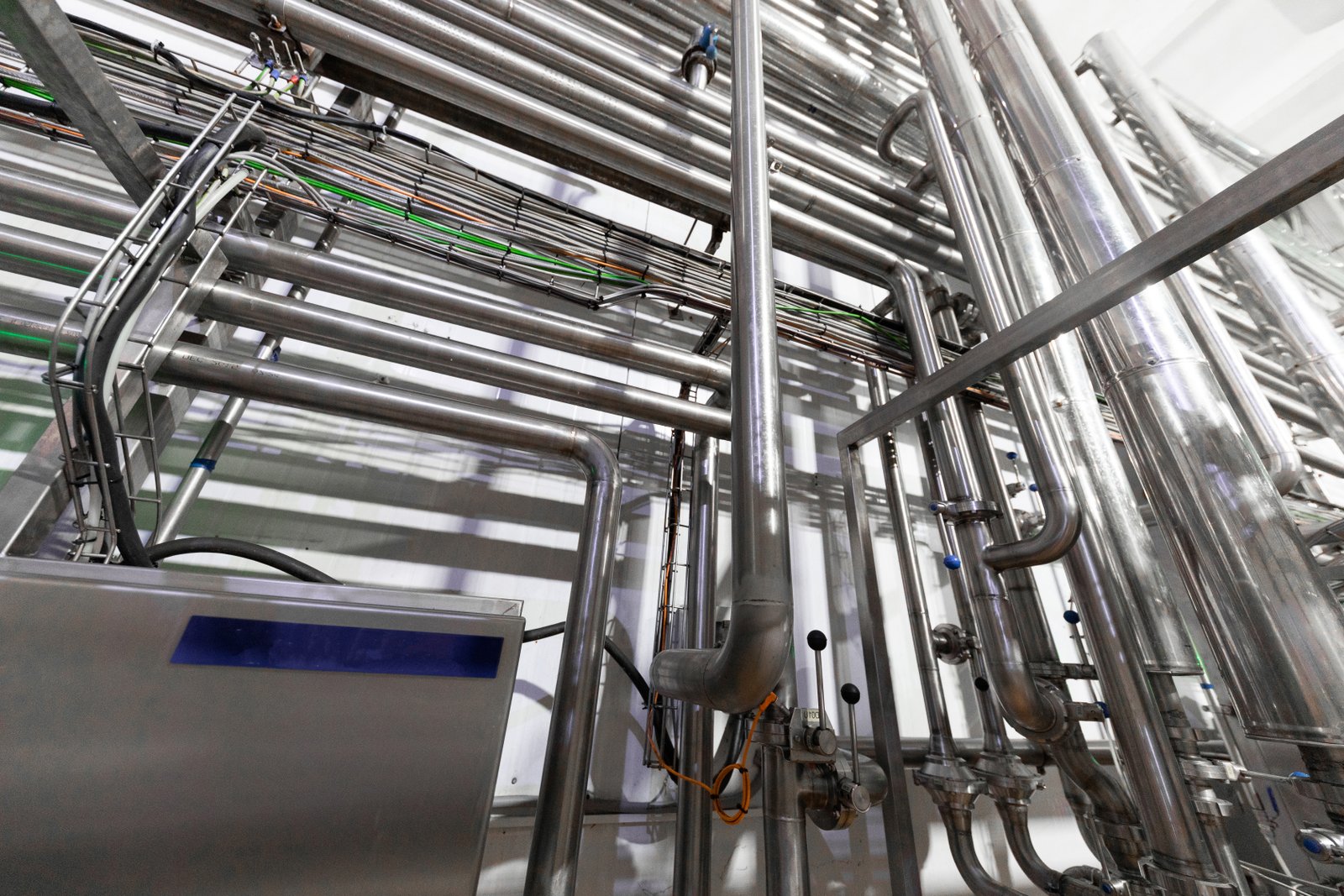
When it comes to expert recommendations for selecting fire sprinkler pipe material, the consensus among forward-thinking engineers, seasoned fire protection consultants, and leading industry bodies is shifting decisively. The guiding principle is no longer simply meeting the minimum code requirements with the cheapest possible material. Instead, the focus has evolved to a more sophisticated, risk-based approach that prioritizes long-term system reliability, performance, and the total cost of ownership (TCO). This holistic view acknowledges that a fire sprinkler system is a critical life-safety asset that must remain viable for the entire lifespan of a building. Within this framework, the inherent vulnerabilities of galvanized steel8—namely its finite sacrificial coating and susceptibility to microbiologically influenced corrosion (MIC)—are seen as unacceptable risks in many applications. Experts now strongly advocate for materials with intrinsic, permanent corrosion resistance. This is where Schedule 40 stainless steel emerges as the highly recommended material. Its proven longevity, immunity to the common failure modes of galvanized pipe, and predictable performance provide the level of assurance that building owners and safety professionals now demand. The recommendation is not just to use stainless steel, but to adopt a mindset that values lifecycle performance over upfront cost.
Heeding the Guidance of Industry Standards and Research
The most authoritative recommendations come from the organizations that set the standards for the industry. The National Fire Protection Association (NFPA), through its cornerstone document NFPA 13, provides the technical basis for system design and installation. While NFPA 13 approves several materials, including galvanized and stainless steel, the accompanying literature and research from its affiliate, the Fire Protection Research Foundation (FPRF)9, have extensively documented the widespread problem of corrosion in sprinkler systems. Reports from the FPRF have been instrumental in raising awareness about MIC and its devastating effects on galvanized pipes. This body of research implicitly guides engineers toward more robust solutions. When an engineer specifies stainless steel, they are aligning their design with the latest industry knowledge and mitigating a well-documented risk.
Furthermore, many insurance underwriters and property risk consultants now strongly influence material selection. Having paid out millions in claims for water damage from leaking galvanized pipes and understanding the risk of system failure, they often recommend or even mandate the use of stainless steel in high-value or critical-risk facilities like data centers, museums, hospitals, and high-tech manufacturing plants. In my discussions with risk engineers, they view stainless steel as a form of "built-in insurance" that reduces the probability of loss. Their recommendation carries significant weight, as it directly impacts the owner's ability to secure favorable insurance rates.
This alignment of research, standards, and risk management provides a powerful, expert-driven case for stainless steel. It moves the decision from one of personal preference to one based on a professional standard of care.
The Contractor's Perspective: Prioritizing Quality and Reputation
Experienced installation contractors are on the front lines, and their recommendations are forged in the reality of building and maintaining these systems. While some may stick to traditional methods, leading contractors now advocate for stainless steel for several key reasons that benefit both them and their clients. Firstly, it protects their reputation. A contractor's worst nightmare is a callback to fix a leak in a newly installed system, or worse, a systemic failure a few years down the line. By installing a stainless steel system, they are providing a higher quality product that is far less likely to fail, reducing their liability and enhancing their brand as a provider of reliable solutions.
Secondly, as discussed earlier, the efficiency of modern installation methods for stainless steel (grooving, press-fit) allows them to complete projects faster and with less labor. This makes them more competitive in their bids. A savvy contractor can leverage these efficiencies to offer a superior stainless steel system for a total installed cost that is much closer to galvanized than the material costs alone would suggest. We work closely with contractors at MFY to help them understand this value proposition. One of our partners, a large mechanical contractor, now includes a "Good-Better-Best" option in their bids: "Best" is always a stainless steel system, and they include a TCO analysis to show the client why it represents the greatest value.
ly, a safer, cleaner job site is a major benefit. Contractors are increasingly focused on worker safety and environmental stewardship. The elimination of cutting oils, heavy equipment, and fumes associated with threading galvanized pipe makes stainless steel a preferred choice for their workforce, reducing risks and improving morale.
The Owner's Mandate: A Shift to Long-Term Asset Management
Ultimately, the most important expert is the building owner or facility manager who is responsible for the asset over the long term. The recommendation from this perspective is driven by a fundamental shift from short-term cost-cutting to long-term asset management. An informed owner understands that a building is a portfolio of assets and liabilities, and a fire sprinkler system should be a reliable asset, not a recurring liability. The expert recommendation for owners is to mandate a specification that prioritizes longevity and minimizes lifecycle cost. This involves asking critical questions during the design phase: What is the intended lifespan of this building? What are the operational risks of a system failure? What is the true 30-year cost of each potential piping material?
I once had a powerful conversation with the founder of a real estate development company. His philosophy was simple: "I don't build problems. I refuse to specify any material that I know has a high probability of failing within the expected life of my building. My reputation is built on quality, and that starts with the systems you can't see." He exclusively mandates Schedule 40 stainless steel for all his projects' sprinkler systems. This is the ultimate expert recommendation.
Therefore, the comprehensive expert advice is to conduct a thorough evaluation that looks beyond the material invoice. It involves consulting the latest research, listening to experienced contractors, and, most importantly, adopting an owner's perspective that values safety, reliability, and long-term financial prudence above all else. The clear conclusion of such an evaluation is that Schedule 40 stainless steel is the superior investment.
Stainless steel resists MIC corrosionПравда
Unlike galvanized pipes, stainless steel has intrinsic corrosion resistance that prevents microbiologically influenced corrosion (MIC), a major failure mode in sprinkler systems.
Galvanized pipe lasts 50+ yearsЛожь
Galvanized pipe's sacrificial coating typically degrades in 15-25 years, while stainless steel can reliably last 50+ years without corrosion issues.
Заключение
In conclusion, for fire sprinkler systems, the evidence is overwhelming. Schedule 40 stainless steel's inherent corrosion resistance, 50+ year longevity, and lower total cost of ownership make it the superior long-term investment for safety and reliability compared to the vulnerabilities of galvanized pipe.
-
Discover the long-term financial benefits of choosing stainless steel over galvanized pipe. ↩
-
Understand the endorsement and safety standards for using stainless steel in fire protection. ↩
-
Understand the limitations and cost implications of using galvanized pipes in fire systems ↩
-
Discover unexpected expenses and risks in maintaining galvanized sprinkler systems ↩
-
Explore advantages of using stainless steel over galvanized for fire sprinkler installations. ↩
-
Understand the traditional methods used for joining galvanized pipes and their drawbacks. ↩
-
Learn about the environmental benefits and recyclability of stainless steel. ↩
-
Understand the corrosion risks and limitations of galvanized steel in fire protection systems ↩
-
Explore FPRF findings on corrosion impacts and recommended solutions for fire sprinkler systems ↩
У вас есть вопросы или нужна дополнительная информация?
Свяжитесь с нами, чтобы получить индивидуальную помощь и квалифицированный совет.
